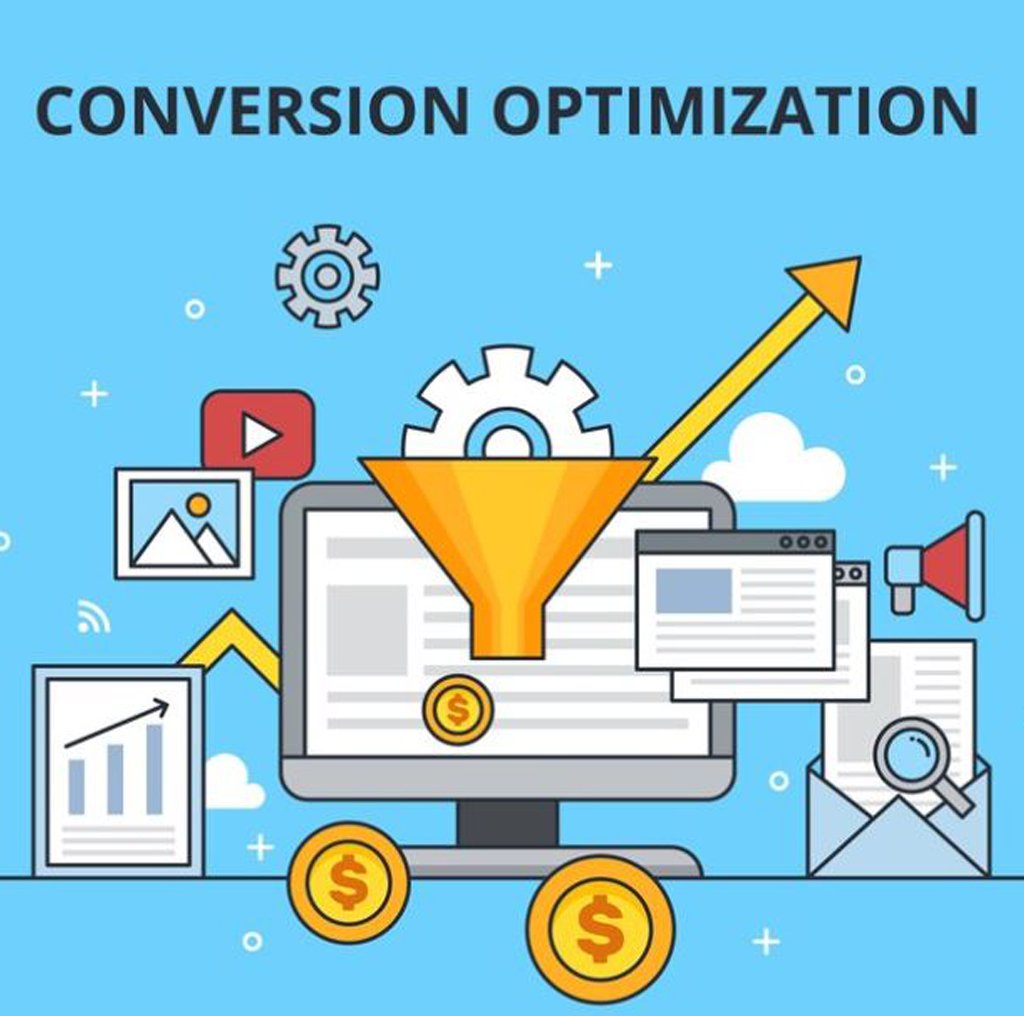How to Create a CRO Roadmap for Your Business

Creating a Conversion Rate Optimization (CRO) Roadmap for your business is a strategic process that involves understanding your customers, analyzing data, experimenting with changes, and implementing successful strategies. This guide will walk you through each step of creating a CRO roadmap, helping you enhance your website’s performance and ultimately increase your conversion rates.
1. Understanding Conversion Rate Optimization (CRO)
What is CRO?
Conversion Rate Optimization is the process of improving the percentage of website visitors who take a desired action, such as making a purchase, filling out a form, or subscribing to a newsletter. CRO involves analyzing user behavior, identifying obstacles to conversion, and implementing changes to enhance the user experience and drive conversions.
Why is CRO Important?
CRO is crucial because it maximizes the value of your existing traffic. Rather than investing heavily in acquiring new visitors, CRO focuses on converting more of the visitors you already have. This approach is cost-effective and can significantly improve your return on investment (ROI).
2. Setting Clear Goals and Objectives
Define Your Goals
Before you can create a CRO roadmap, you need to define what success looks like for your business. Goals should be specific, measurable, achievable, relevant, and time-bound (SMART). Common CRO goals include:
- Increasing the conversion rate on a specific landing page
- Reducing the cart abandonment rate
- Increasing the average order value
- Boosting the number of email sign-ups
Identify Key Performance Indicators (KPIs)
KPIs are metrics that help you measure progress towards your goals. For CRO, important KPIs might include:
- Conversion rate
- Bounce rate
- Average session duration
- Pages per session
- Customer lifetime value (CLV)
3. Conducting a Comprehensive Audit
Analyze Your Current Performance
Begin by analyzing your website’s current performance. Use tools like Google Analytics, heatmaps, and user recordings to gather data on how visitors are interacting with your site. Key areas to focus on include:
- Traffic sources
- User behavior
- Conversion funnels
- Drop-off points
Identify Areas for Improvement
Based on your analysis, identify areas where users are encountering friction. Look for pages with high bounce rates, forms with low completion rates, and other indicators of poor user experience. Prioritize these areas for optimization.
4. Understanding Your Audience
Create User Personas
User personas are fictional representations of your ideal customers. They help you understand your audience’s needs, preferences, and pain points. To create user personas:
- Conduct surveys and interviews with your customers
- Analyze demographic and psychographic data
- Identify common behaviors and motivations
Map the Customer Journey
The customer journey map outlines the steps a user takes from initial awareness to conversion. Understanding this journey helps you identify opportunities to improve the user experience at each stage. Key stages typically include:
- Awareness: How users find your site
- Consideration: How users interact with your content
- Decision: How users convert
5. Developing Hypotheses
Formulate Data-Driven Hypotheses
Based on your audit and audience research, develop hypotheses about what changes could improve conversions. Each hypothesis should be:
- Clear: State the problem and the proposed solution
- Testable: Ensure you can measure the impact of the change
- Actionable: Be specific about what will be implemented
Prioritize Hypotheses
Not all hypotheses are equal. Prioritize them based on factors such as potential impact, ease of implementation, and alignment with business goals. A common prioritization framework is the ICE score, which evaluates Impact, Confidence, and Ease.
6. Implementing A/B Testing
Design Your A/B Tests
A/B testing involves comparing two versions of a page or element to see which performs better. To design effective A/B tests:
- Choose a variable to test (e.g., headline, call-to-action)
- Create variations that are distinct yet relevant
- Ensure a sufficient sample size for statistically significant results
Run and Analyze Tests
Use A/B testing tools like Optimizely, VWO, or Google Optimize to run your tests. Monitor the results and analyze the data to determine which variation performs better. Pay attention to metrics such as conversion rate, bounce rate, and time on page.
7. Implementing Changes and Iterating
Deploy Winning Variations
Once you’ve identified the winning variations from your A/B tests, implement them on your site. Ensure that all changes are tracked so you can monitor their long-term impact.
Continuously Iterate
CRO is an ongoing process. Continuously analyze performance, develop new hypotheses, and run additional tests. Regularly revisit your goals and KPIs to ensure your optimization efforts remain aligned with your business objectives.
8. Tools and Resources for CRO
Analytics Tools
- Google Analytics: Comprehensive web analytics tool
- Hotjar: Heatmaps, session recordings, and feedback polls
- Crazy Egg: Heatmaps and A/B testing
A/B Testing Tools
- Optimizely: Advanced A/B testing and personalization
- VWO: Conversion optimization platform with A/B testing
- Google Optimize: Free A/B testing tool integrated with Google Analytics
User Feedback Tools
- SurveyMonkey: Online surveys and feedback forms
- UsabilityHub: Remote user testing and feedback
- Qualaroo: On-site surveys and feedback widgets
9. Case Studies and Examples
Case Study 1: E-commerce Website
An e-commerce website aimed to reduce cart abandonment rates. After analyzing user behavior, they discovered that high shipping costs were a major deterrent. They hypothesized that offering free shipping on orders over a certain amount would increase conversions.
Hypothesis: Offering free shipping on orders over $50 will reduce cart abandonment rates.
Test: They ran an A/B test comparing the current shipping policy with the new free shipping offer.
Results: The test showed a 15% increase in conversions and a 20% reduction in cart abandonment rates. The change was implemented site-wide, leading to a significant boost in revenue.
Case Study 2: SaaS Company
A SaaS company wanted to increase the number of trial sign-ups. They hypothesized that simplifying the sign-up form would reduce friction and increase conversions.
Hypothesis: Reducing the number of fields in the sign-up form from six to three will increase trial sign-ups.
Test: They conducted an A/B test comparing the original form with the simplified version.
Results: The simplified form resulted in a 25% increase in trial sign-ups. The change was rolled out across the site, leading to a substantial growth in their user base.
Case Study 3: Content Website
A content website aimed to boost newsletter subscriptions. They hypothesized that adding a prominent call-to-action (CTA) at the end of each article would encourage more readers to subscribe.
Hypothesis: Adding a CTA for newsletter subscriptions at the end of articles will increase the number of sign-ups.
Test: They tested the original article layout against a version with the added CTA.
Results: The version with the CTA saw a 30% increase in newsletter sign-ups. The CTA was implemented on all articles, significantly growing their subscriber list.
10. Overcoming Common Challenges in CRO
Challenge 1: Insufficient Data
Solution: Ensure you have enough traffic to run statistically significant tests. If your site has low traffic, consider running tests over a longer period or focusing on high-traffic pages.
Challenge 2: Resistance to Change
Solution: Involve stakeholders early in the process and communicate the potential benefits of CRO. Use data to support your hypotheses and demonstrate the impact of successful tests.
Challenge 3: Managing Multiple Tests
Solution: Use a structured approach to manage and prioritize tests. Tools like Trello, Asana, or JIRA can help you keep track of ongoing tests, hypotheses, and results.
Challenge 4: Understanding Test Results
Solution: Develop a solid understanding of statistical significance and how to interpret test results. Use tools like Optimizely or VWO, which often include built-in statistical analysis.
11. Building a CRO Culture in Your Organization
Educate and Train Your Team
Ensure your team understands the importance of CRO and how it can benefit the business. Provide training on CRO principles, tools, and best practices. Encourage a data-driven mindset and foster a culture of continuous improvement.
Collaborate Across Departments
CRO is not just the responsibility of the marketing team. Involve stakeholders from different departments, including product development, design, and customer support. Collaborative efforts can lead to more comprehensive and effective optimization strategies.
Celebrate Successes and Learn from Failures
Share the results of your tests, both successes and failures, with the entire organization. Celebrate wins to build momentum and learn from unsuccessful tests to refine your approach. Transparency and open communication are key to fostering a positive CRO culture.
12. Future Trends in CRO
Personalization
Personalization involves tailoring the user experience based on individual preferences and behavior. As technology advances, businesses can leverage machine learning and AI to deliver highly personalized experiences that drive conversions.
Mobile Optimization
With the increasing use of mobile devices, optimizing for mobile is more important than ever. Ensure your website is responsive, fast-loading, and provides a seamless experience across all devices.
Voice Search and AI
Voice search is becoming more prevalent, and businesses need to adapt their CRO strategies accordingly. Optimize for voice search by focusing on natural language queries and providing clear, concise answers. Additionally, AI-powered tools can help analyze data and identify optimization opportunities more efficiently.
Data Privacy and Security
As data privacy regulations become stricter, businesses must ensure they comply with all relevant laws. Prioritize data security and transparency to build trust with your users. Make sure your CRO efforts respect user privacy and provide clear information about data usage.
Creating a CRO roadmap for your business is a systematic process that requires careful planning, data analysis, and continuous iteration. By setting clear goals, understanding your audience, developing data-driven hypotheses, and implementing effective tests, you can optimize your website to drive higher conversions. Remember, CRO is an ongoing journey that demands a commitment to continuous improvement and a willingness to adapt to changing trends and user behaviors. Embrace the process, and you’ll see significant improvements in your business’s performance and growth.

